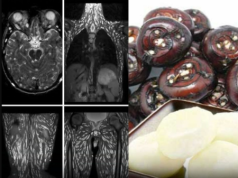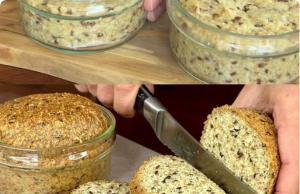You pull your favorite pair of jeans out of the laundry, ready to wear…
Instead of smooth, structured denim, you’re met with strange ripples, puckered seams, and wavy hems—like they’ve just survived a spin cycle war.
What went wrong?
It’s not magic.
It’s fabric physics—and yes, there’s a real reason this keeps happening.
Let’s uncover why your jeans come out looking “chewed up,” and how to keep them smooth, well-shaped, and fitting perfectly—wash after wash. 💛
🌀 What Causes Those Annoying Ripples in Jeans?
The ripples aren’t random. They’re signs of fiber stress and uneven drying, especially in modern stretch denim.
Here’s what really happens:
1️⃣ Heat + Agitation = Fiber Distortion
Most jeans today are made from cotton blended with spandex or elastane (usually 1–3% for stretch). These synthetic fibers are highly sensitive to heat.
When exposed to:
- Hot water
- High-speed spin cycles
- Tumble drying
…the elastic fibers shrink, twist, or lose tension unevenly, leading to ripples along the thighs, seams, and hems.
🔥 Think of it like a rubber band that’s been stretched too far—it never fully springs back.
2️⃣ Uneven Drying Creates Wrinkles
If jeans are bunched up in the dryer, some areas dry faster than others. As moisture escapes, the fabric contracts—but not uniformly.
Result? Wavy textures, puckered pockets, and warped knees.
3️⃣ Overloading the Washer
Too many clothes in one load means less room to move.
Jeans get twisted, folded, and crushed during the wash—locking in deep creases that turn into permanent ripples once dried.
4️⃣ Poor Storage Habits
Folding jeans sharply or cramming them into drawers creates “memory lines.”
Over time, these folds become permanent creases—especially around the thighs and seat.
✅ How to Wash & Dry Jeans Without Ripples
Follow this simple routine to keep your denim looking fresh and wrinkle-free.
🧼 Step 1: Wash Cold & Gentle
- Turn jeans inside out – protects color and surface finish
- Use cold water on the gentle cycle
- Choose a mild detergent – avoid bleach and fabric softeners (they break down elastic fibers)
🚫 Never use hot water – it rapidly degrades spandex and causes shrinkage.
🌀 Step 2: Don’t Overload the Machine
Wash jeans alone or with similar items (like other pants or towels).
Give them space to move freely—this prevents twisting and deep creasing.
🌬️ Step 3: Air Dry or Use Low Heat Only
✅ Best Option: Air Dry Flat or Hanging
- Lay flat on a drying rack, or hang by the waist (never by the legs!)
- This maintains shape and prevents stretching
🔥 If You Must Use a Dryer:
- Use the Delicate or Air Fluff setting (no heat)
- Remove while still slightly damp
- Smooth out wrinkles by hand
- Finish drying flat
❌ Avoid high heat – it’s the #1 cause of rippling and fiber damage.
🛠️ How to Fix Ripple-Damaged Jeans
Already dealing with wavy, distorted denim? Try these fixes:
1️⃣ Iron or Steam It Out
- Use a steamer or iron on low heat with a cloth barrier (to protect fabric)
- Gently stretch the area taut while steaming
- Focus on rippled zones: thighs, hems, pockets
2️⃣ Reshape While Damp
- Lightly dampen the affected area with a spray bottle
- Gently pull and smooth the fabric to realign fibers
- Lay flat to dry in the correct shape
3️⃣ Wear Them to Restore Shape
- Put on slightly damp jeans
- Walk around for 20–30 minutes—your body heat helps relax and reshape the fibers naturally
🧵 Bonus: Why Vintage Jeans Don’t Ripple as Much
Old-school jeans (from before the 2000s) were often made from 100% cotton—no stretch added.
Without spandex, they didn’t suffer from heat-induced distortion the way modern stretch denim does. While they may shrink in the wash, they tend to hold their structure better and develop fades instead of ripples.
Today’s stretch blends offer comfort—but require more care.
✅ Final Thought: Respect Your Denim
Those weird ripples aren’t a fashion flaw—they’re a warning sign from your jeans.
They’re telling you they’ve been through too much heat, too much agitation, and too little care.
But the good news?
With the right washing habits—cold water, gentle handling, and air drying—you can keep your favorite pair looking sharp, structured, and ripple-free for years.
Because great jeans shouldn’t look battle-worn after one wash.
They should feel broken-in, not broken down.
So treat them right.
Your denim will thank you.










